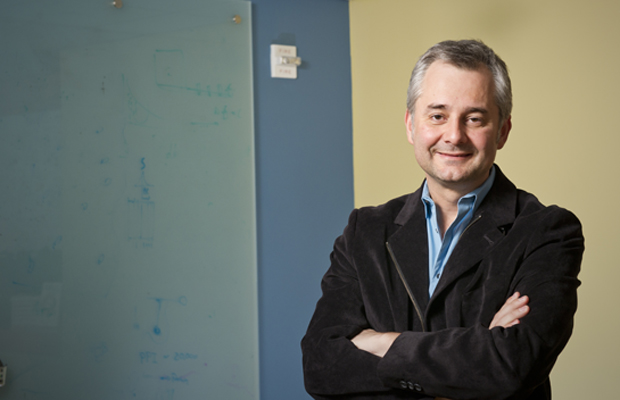A new model for our ‘bursty behavior’

It’s a rather unsurprising idea: Humans do things in bursts of activity. “We do not do things uniformly,” said Albert-László Barabási, a Distinguished Professor of Physics with joint appointments in the College of Science and the College of Computer and Information Science and founding director of Northeastern’s world-leading Center for Complex Network Research.
Instead, he said, each one of our actions is correlated to those that came before. For instance, perhaps we send 16 emails in a half-hour period and then surf the Web for an hour. Or maybe we make a few calls in the afternoon and then set the phone down for the rest of the evening.
Though it may be a subconscious side-effect of evolution or simply convenience, our bursty behavior allows network scientists like Barabási to predict how we will act in the future and, by extension, how the products of our bursty work — our money, our tweets or even our ideas — will travel through society.
But these predictions depend on robust mathematical algorithms. Until recently, the network scientists’ standard tools tended to “give rise to positive correlations, even though the events were totally independent,“ said Barabási. For predominantly random systems, these models work fine. Not so with bursty systems.
In a recent paper published in the journal Nature Scientific Reports, Barabási and his colleagues report a new model capable of detecting burstiness more accurately.
Márton Karsai, the paper’s first author — and a researcher who will join the lab of physics professor Alessandro Vespignani this fall — said that up until now, “we have presumed that these systems can be interpreted as mechanisms where the consecutive events are not independent from each other and are correlated.” Now they can confirm that presumption mathematically.
Burstiness is not exclusive to the human social network. Other animals also behave this way. Our neurons fire in bursts. Even earthquakes follow the pattern, with long periods of silence followed by a collection of tremors. The new model reveals a set of properties universal to all of these systems, despite the fact that they are driven by extremely different mechanisms.
“The common feature shared by these systems is that beyond being bursty, the bursty events are not evolving in pairs but more likely in longer trains,” Karsai said. That is, the various individual events in a burst are all correlated; the relationship does not exist only between those events that follow one another in a sequence.
The new algorithm, Barabási said, “offers further modeling and conceptual challenges for the field.” Karsai added that they have already begun to move in this direction, having published another paper using this method to answer more specific questions about human communication behavior.
View selected publications of Albert-László Barabási in IRis, Northeastern’s digital archive.




